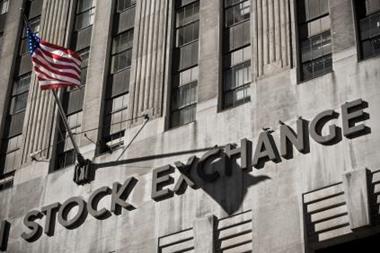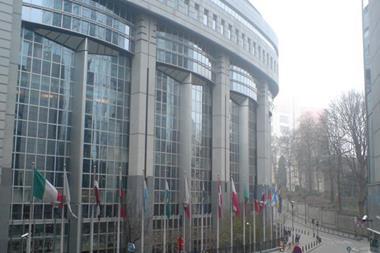Nathan Skinner tracks the latest developments in European legislation towards evolving a US-style system of collective redress
On a January morning in 2002 a lawyer rolled up outside a Houston courtroom brandishing a box of tattered documents. ‘This is the shredded evidence that we got out of Enron,’ he told the crowd of reporters who had gathered to hear the story of the collapse of the company. The man was William Lerach, one of America’s foremost shareholder lawyers. Working for the plaintiffs in the class action suit against Enron was a crowning moment for him.
Five years later and it was Lerach who was on the stand. In October 2007 he pleaded guilty to conspiracy to obstruct justice. The charge related to kickbacks given to incentivise plaintiffs in cases Milberg, his firm, handled. Lerach was fined and sentenced to two years in prison. Milberg eventually settled with federal prosecutors for $75m. The case signaled the end of an illustrious career that had made Lerach enemy number one of corporate America.
The one-time champion of cheated investors may be behind bars, but shareholder litigation is very much in vogue. And changes to the European legal regime have led to speculation that these types of class action specialists could be migrating.
Most of the big law firms have set up class action units in Europe. And with a prolonged period of market turmoil expected from the sub-prime crisis, the litigators are primed to pounce. Having said that, the number of companies sued in US securities fraud class action actually dipped slightly last year, according to research from Stanford Law School. But this could indicate that litigators have moved on to other jurisdictions.
Two things have kept tongues wagging on this issue. They are the well-documented changes in European legal systems and regulators who appear to be firmly in favour of collective redress.
It is easy to find insurers who will say European business is on the brink of US style class action. In a recent report the London market rhetorically asked: ‘Is business facing a liability crisis?’ The authors picked apart an impressive survey of board-level executives to find an answer.
Signaling their own fears, just over half of those surveyed thought the current financial market instability was likely to lead to individual company directors becoming the target of professional liability claims. Just under half thought the scale of claims arising from the sub-prime crisis would exceed those resulting from the dotcom crash. The concept of a compensation culture also appeared to be well entrenched. Around half of the respondents said it was developing in regions outside the US.
Yet there are a variety of reasons to believe the US model will never permeate European courts. One protection against the ‘excesses’ of the US system, say Europeans, is contingency fees. In Europe they are still rare. It was the lure of recovering a slice of the punitive damages that may have got Milberg into trouble. Without the contingency fee system claims can be prohibitive and dissuasive. The loser pays rule is another disincentive for claimants, and is not present in the largely risk-free US litigation. Further, judges who hear civil litigation in Europe, may be less prone to awarding inflated damages.
Despite this, an argument exists that recent developments have added up to a chipping away of some of the crucial European procedural protections. In September 2007 a majority of European Members of Parliament (MEPs) indicated they were generally supportive of an EU-wide system of ‘collective redress’. The MEPs said they wanted a system, like the US, which allowed individual claims to be grouped together into one suit, giving consumers the incentive to pursue compensation. Around a month later the Commission published a White Paper that publicly endorsed the concept of collective action for breach of competition laws, but also criticised the excesses of US litigious culture.
Around the same time, class action law firm Cohen Milstein Hausfeld & Toll was mulling the idea of launching a class action against supermarkets and dairies for price fixing. The firm was hoping to claim around £270m for consumers. In the end it dropped the claim. ‘There simply aren’t the structures set up in Europe to effectively allow for class actions,’ explains Steve Kaufmann, chair of litigation department at Morrison & Foerster.
‘There is no direct UK equivalent of a US class action. There are, however, various forms of collective action and other mechanisms for pursuing group complaints,’ noted Suzanne Kearney, a solicitor with Crawfords.
Several European jurisdictions have budding systems of collective legal action, but it is within the UK and within the competition arena that some of the most aggressive developments have taken place.
In many cases, the profits companies make from price fixing far exceed the enforcement fines. As a result some regulators are proponents of other forms of penalty. The UK’s Office of Fair Trading (OFT) is one of them. In June this year, the OFT’s tough stance culminated in the imprisonment of three UK businessmen for bid-rigging offences. The men, Peter Whittle, David Brammar and Bryan Allison, pleaded guilty and were jailed for up to three years for participating in a cartel and fixing prices of marine hoses – which are used by the oil and defence industries. Regulators in the UK, US and Europe collaborated to secure the conviction.
Prison sentences for individual cartelists are seen in the US and the UK as the most effective deterrent of illegal behaviour. ‘While a company may carry out a risk/benefit analysis on the likelihood of being fined for a cartel, the increasing prospect of hefty personal fines and a stint in jail may now make the individuals involved think twice,’ said Simon Neill of European law firm Osborne Clarke.
“Consumers suffered from a cartel that inflated the prices of replica football shirts.
And where the regulator investigates and finds a company culpable, it wants affected parties to group together and point to the judgment as a way of validating their own claims.
A mark of how far the new procedures have come and the size of the threat they pose to businesses is evident in the settlement of Which? v JJB Sports. Following an investigation by the OFT – which found that consumers had suffered as a result of a cartel that inflated the prices of replica football shirts – consumer group Which? reached a settlement in January that saw JJB pay £20 to each fan who joined the case. There were about five-hundred people who joined the suit out of an estimated one million strong pool of potential claimants. Hardly the start of massive class-action style litigation, notes Toby Starr, a partner at Starr & Partners LLP. The assessment appears to be that businesses have less to fear from consumer action than they do from the OFT and other authorities, he adds.
In November last year, the OFT recommended strengthening the private actions regime. Since then they have also discussed the ‘opt-out’ collective action which characterises the US system and allows claims to be brought with little or no participation, as well as considering rules that would move closer to the contingency fee system.
The challenge for the authorities is to try and stimulate claims and give people access to compensation, but to avoid going too far towards massive, and not necessarily merited, payouts, says Nicholas Heaton, a dispute resolution partner at Lovells.
While the UK has yet to firmly grasp all of the OFT’s recommendations, the legal community is gearing up for the road ahead. External funding, which makes it easier for claimants to seek compensation, is becoming more popular, and a number of UK law firms have launched initiatives.
There is an upside to all of this. Businesses also suffer when their suppliers and competitors engage in anti-competitive behaviour. But Ingrid Gubbay, a consultant for Cohen Milstein, says there is no real awareness among the European business community of the potential losses and the methods for obtaining compensation. ‘Businesses could be reclaiming significant funds,’ she says.
Since they are aimed chiefly at consumers, these developments might not cause individuals too much concern. But shareholders, who are traditionally the ones that bring claims against directors and officers, have also brought collective action legislation to bear. How easy this is depends on how the laws are drafted in each jurisdiction. Most of the projects currently under discussion limit the right to collective redress to consumer groups only, according to Thibaud Hervy and Thomas Harmeyer of HCC Global Financial Products.
There are instances, however, where shareholders have used collective arrangements to their advantage. In the Netherlands, a law originally designed for resolving mass injury claims was used to settle a securities claim. It was the first ever European class settlement of a securities fraud claim.
The claim was brought by a group of European institutional investors against Royal Dutch Shell over the company’s alleged exaggeration of its proven oil and gas reserves. Under the terms of the settlement at the Amsterdam Court of Appeals Shell agreed to pay its European shareholders around $450m in compensation.
In a shining example of forum shopping, shareholders sidestepped a ban on class action lawsuits in France and went straight to the Dutch courts to file a suit against EADS. The suit claims that EADS top executives dumped stock shortly before announcements were made that the group’s aircraft manufacturer, Airbus, would not meet the set release date for the A380 superjumbo. Airbus executives, including its former finance director, have faced police questioning over the allegations.
In the UK, changes to the Companies Act, which took effect in October last year, have further extended the rights of shareholders to bring claims. The Act introduces a new duty on directors requiring them to act in good faith ‘to promote the success of the company for the benefit of its members as a whole’. Some insurers have broadened their coverage of Directors & Officers (D&O) policies to cover the new liabilities.
There is clearly no direct equivalent of US class actions in Europe. The modest take up of group litigation is probably a result of the procedural protections mentioned earlier. But it is also apparent that these protections are gradually eroding.
The prophesy of an explosion in class action litigation in Europe has so far turned out to be false. The level of claims is currently unlikely to have any effect on the soft D&O market. But with lawyers eager to test the new procedures and champion the cause of disgruntled investors, it is worth taking the risk seriously.
Postscript
Nathan Skinner is associate editor, StrategicRisk

















